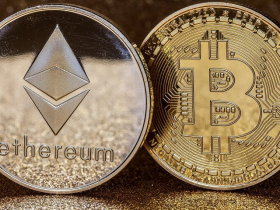Cryptocurrency- and money-carrying digital wallets are replacing more conventional methods of transaction in the world. Knowing the differences between different currencies is essential in light of the abundance of options.
A popular debate in the tech community is NFT vs. cryptocurrency. Using the same technology and underlying concepts, NFTs and cryptocurrency are both built on the blockchain. They thus often attract the same kinds of individuals. They differ greatly from one another in terms of identity and operation, nevertheless.
NFT
The term “non-fungible tokens” is abbreviated as NFT. “It is unique and cannot be substituted with something else” is the definition of non-fungible matter. Because such a certificate cannot be falsified, each NFT is distinct and easily verifiable because it contains identifying information like “who owns the digital asset” and “who sold it.”
For your digital collectibles—such as video games, music, and artwork—NFT generates a blockchain-based digital certificate. This credential gives your work a unique identification.
Cryptocurrency
Cryptocurrency is described as “virtual money that uses cryptography to safeguard and verify transactions, as well as regulate and control the creation of new currency units.” It is independent from outside intervention and decentralized. In contrast to conventional payment systems that are overseen by banks or governments, it is neither issued nor governed by any central body.
There are no transaction restrictions and extremely low or nonexistent transaction charges with cryptocurrencies.
Trading
NFT: No-fee transactions (NFTs) are conducted online using a digital ledger and cannot be exchanged. For instance, the purchaser receives an original digital file in place of a physical photo of Monalisa to display on the wall.
Cryptocurrency: Virtual money can be swapped or exchanged without losing its intrinsic value. Each user can send and receive payments using any kind of digital currency or cryptocurrency through their peer-to-peer blockchain-powered system.
Purpose
NFT: Non-fungible tokens are used to prove that digital assets are one-of-a-kind and cannot be exchanged by acting as authenticity certificates. Because of the blockchain’s cryptographic principles, an NFT can never be altered, stolen, or changed.
Cryptocurrency: Similar to more established forms of currency like the US dollar, cryptocurrency is a type of exchange meant to get around the issues with current currencies and trade digital information. The buying and paying of products and services is made possible by it in a decentralized, fast, and secure manner.
erratic behavior
Volatility
NFT: It is stated that NFTs are less volatile than cryptocurrencies. Tradesmen and artists have been drawn to NFT because of its creative and artistic features.
But conversely, it can discourage people who find the process of creating NFTs unduly challenging, convoluted, or troublesome.
Cryptocurrency: Proponents and authorities of cryptocurrency regulation have often stressed that cryptocurrencies, in particular, are considered high-risk investments. To be more stable than others, several cryptocurrencies—like Tether—have been developed.
Market Places and Uses
NFT: NFT can be used for a number of different things, including as domain names, digital content, gaming accessories, and investments.
Rarible, OpenSea, and Foundation are currently the biggest NFT marketplaces.
Cryptocurrency: Blockchain technology is utilized for a variety of purposes, such as ethical corporate operations, low-cost money transfers, and wealth management. The major exchanges for cryptocurrencies are eToro, Coinbase, Binance, and Kraken.
Conclusion
Those with an artistic bent who want to make money from their digital work might now consider NFTs as a viable option. The market’s artistic and creative element has enticed artists and traders.
However, crypto comes as a bit of a surprise. Being more stable than other cryptocurrencies was the goal of some of their creation. An alternative to cryptocurrencies like Bitcoin and Ethereum is a stablecoin, which is one with less volatility. There are two instances of stablecoins: Tether and USD Coin. A US dollar’s value is what makes it worth something.
Thus, the debate over NFT vs. Crypto is intense. That being said, how would you select between the two? This is determined by the trader’s motivation and risk tolerance.













Leave a Reply